The “Veiled Woman,” sculpted by the Italian artist Giovanni Battista Lombardi in 1869 CE, stands as a stunning testament to the ingenuity and artistic brilliance of the 19th century. Known for its extraordinary craftsmanship, this marble sculpture is revered for its intricate depiction of a translucent veil, creating a lifelike and ethereal quality that captivates viewers worldwide. In this article, archeology.dulichvn.net, into the historical context, artistic techniques, and enduring legacy of Lombardi’s “Veiled Woman.”
The Historical Context of the “Veiled Woman”
A Reflection of the 19th-Century Renaissance Revival
The 19th century marked a period of renewed interest in classical art forms, with many European artists drawing inspiration from the Renaissance and Baroque eras. Giovanni Battista Lombardi, a prominent sculptor of this time, became renowned for his ability to blend traditional techniques with innovative designs.
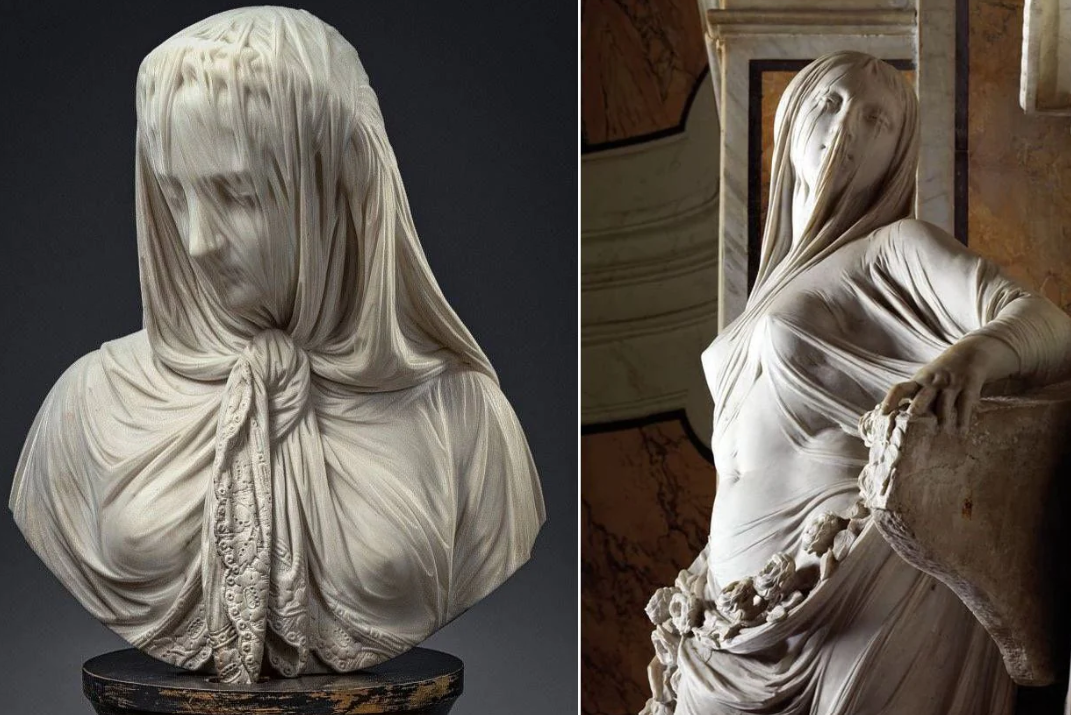
The “Veiled Woman” was created during a time when marble sculptures were experiencing a resurgence in popularity. This period saw a fascination with lifelike representation and symbolic themes, making works like Lombardi’s a perfect reflection of its era.
Giovanni Battista Lombardi: The Master Sculptor
Born in Brescia, Italy, in 1823, Giovanni Battista Lombardi honed his craft under the tutelage of some of the finest sculptors of his time. His works often featured religious and allegorical themes, with a particular focus on capturing delicate and intricate details.
The “Veiled Woman” exemplifies Lombardi’s mastery over marble as he successfully transforms the hard stone into what appears to be soft, flowing fabric.
Artistic Techniques Behind the Masterpiece
The “Veiled Woman” by Giovanni Battista Lombardi is widely admired for its unparalleled artistry, with techniques that showcase his mastery over marble. Every inch of the sculpture is a testament to the artist’s dedication to detail and innovation, making it one of the most celebrated works of the 19th century.
See more: The Opening of the Eiffel Tower: A Landmark Moment in History
The Illusion of a Veil
The most captivating feature of the “Veiled Woman” is the seemingly translucent veil draped over the subject’s face. The ability to create such an effect in marble is a hallmark of Lombardi’s genius. The veil appears so delicate and realistic that it often leaves viewers questioning how such a feat was possible with stone.
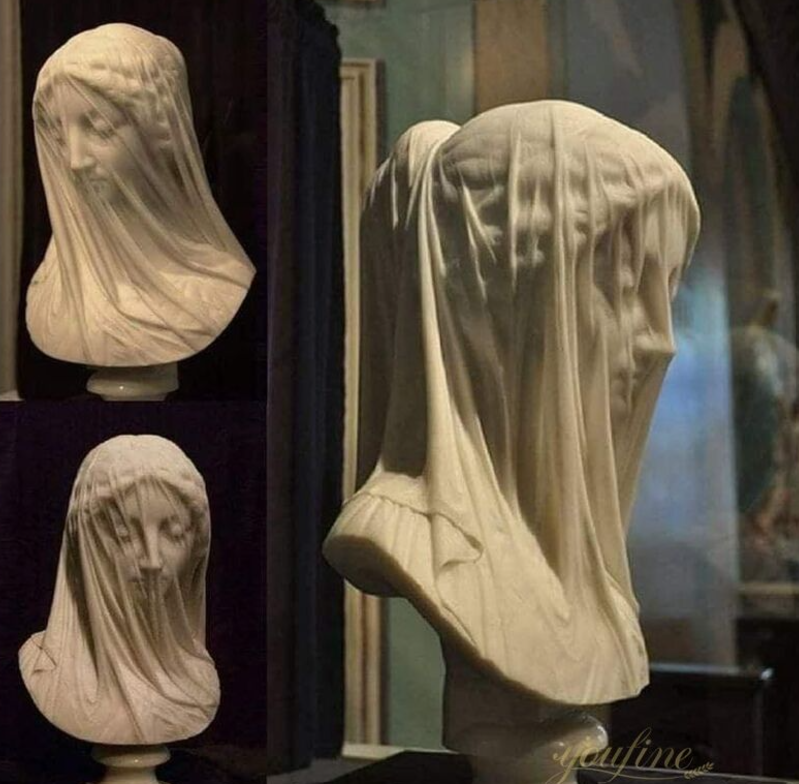
Lombardi employed a technique known as undercutting, which involved carving deeply into the marble to create areas of varying thickness. Thinner sections of marble allowed light to penetrate slightly, simulating the softness and translucency of real fabric. This illusion is enhanced by meticulous polishing, which ensures a smooth surface and amplifies the way light interacts with the material.
This innovative approach required not only extraordinary technical skill but also a profound understanding of how light behaves. Lombardi’s mastery of these elements allowed him to transform a solid material into something that appears weightless and ethereal.
Symbolism in the Sculpture
While the technical aspects of the sculpture are undeniably impressive, the veil carries a deeper, symbolic significance. In many cultures and traditions, veils hold profound meanings, representing themes such as:
- Modesty and Purity: The veil is often associated with modesty, reflecting the cultural values of the time when the sculpture was created.
- Mystery and Hidden Truths: The delicate covering of the woman’s face invites viewers to look beyond appearances, suggesting the existence of hidden layers of truth or emotion.
- Spiritual Devotion: The veil could also symbolize a connection between the physical and spiritual realms, emphasizing themes of devotion, faith, or introspection.
- The “Veiled Woman” thus transcends its role as a mere representation of a figure. It becomes an allegory, encouraging viewers to reflect on the interplay between what is seen and what is hidden, and on the eternal mysteries of life and art.
Attention to Detail
Lombardi’s attention to detail elevates the “Veiled Woman” from an impressive sculpture to a true masterpiece. Every element, no matter how small, has been crafted with incredible precision and care.
- Facial Features: Despite the veil, the woman’s facial features are clearly defined, with delicate lips, a finely sculpted nose, and eyes that seem to hold a quiet expression of serenity or contemplation. This level of detail breathes life into the sculpture, making it feel almost alive.
- Fabric Folds: The folds of the veil are intricately carved, cascading naturally around the woman’s face. The soft, flowing lines mimic the way real fabric would behave, adding to the sculpture’s realism.
- Textural Contrast: Lombardi contrasts the smoothness of the veil with the subtle textures of the woman’s hair and skin, creating a dynamic interplay that enhances the sculpture’s visual impact.
- The level of detail in the “Veiled Woman” not only showcases Lombardi’s technical skills but also reflects his ability to infuse his work with emotion and humanity. Each curve, fold, and line tells a story, inviting viewers to marvel at the artist’s vision and craftsmanship.
See more: Statue of Tutankhamun A Testament to Ancient Egyptian Beliefs
Pushing the Boundaries of Marble Sculpture
Giovanni Battista Lombardi’s work on the “Veiled Woman” exemplifies the possibilities of marble as a medium. He pushed the boundaries of what could be achieved with stone, creating a piece that feels both timeless and otherworldly.
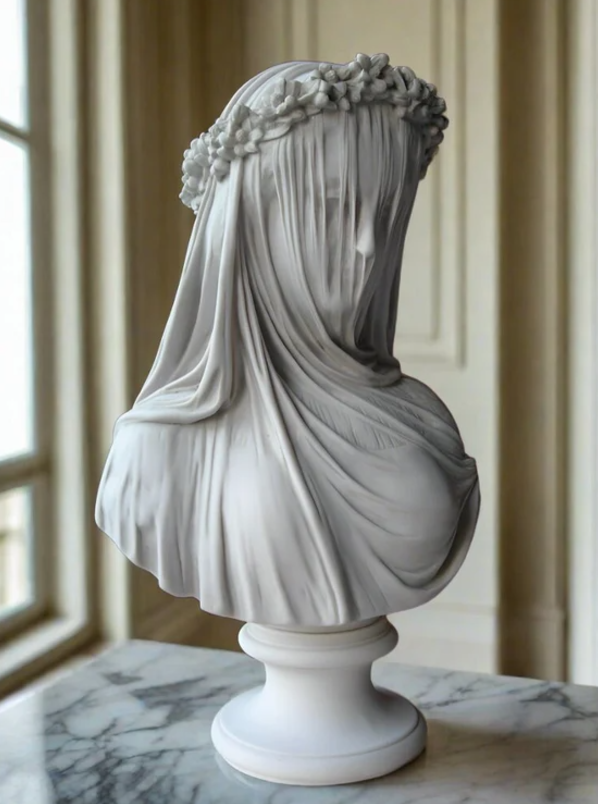
This sculpture is not merely an object of beauty; it is a profound exploration of themes such as mystery, faith, and the delicate interplay between material and illusion. Through his innovative techniques and attention to detail, Lombardi has left an indelible mark on the world of art, inspiring generations of sculptors to strive for excellence.
Legacy and Influence of the “Veiled Woman”
The “Veiled Woman” by Giovanni Battista Lombardi is more than just a stunning work of art—it is a testament to the enduring power of human creativity and the possibilities of sculpture as a medium. Its legacy continues to resonate in the art world, inspiring awe and admiration over 150 years after its creation.
A Masterpiece of Realism
The “Veiled Woman” is celebrated as one of the most extraordinary examples of marble sculpture from the 19th century. Its unparalleled realism has cemented Lombardi’s reputation as a master sculptor, with his ability to replicate the delicate transparency of a veil serving as a pinnacle of technical achievement.
This sculpture stands out not only for its beauty but also for the innovative techniques Lombardi employed to create it. By mastering methods such as undercutting and polishing, he transformed a solid block of marble into a work that appears light, delicate, and almost ethereal.
Artists and sculptors worldwide continue to study the “Veiled Woman” for inspiration, recognizing it as a benchmark of what can be achieved in marble. Its intricate details and the illusion of softness serve as a challenge and aspiration for those who strive to reach similar heights in their craft.
Display and Preservation
Today, the “Veiled Woman” is housed in prestigious art collections and museums, where it remains a focal point for art enthusiasts and historians. Institutions recognize the significance of this masterpiece and have made great efforts to preserve it, ensuring its beauty and historical value endure.
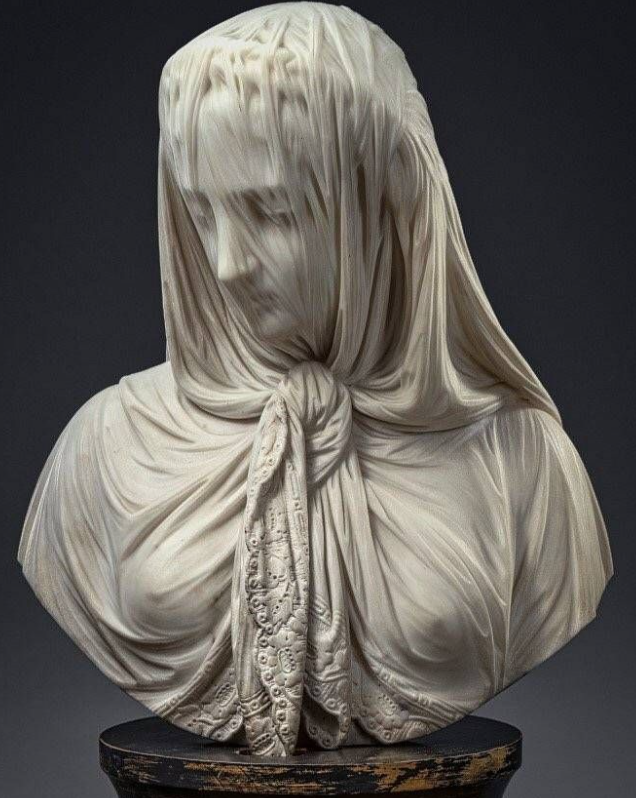
Conservation Efforts: Special care is taken to maintain the sculpture’s condition. Environmental controls, such as temperature and humidity regulation, are used to protect the marble from deterioration over time.
Public Accessibility: By being part of museum collections, the sculpture is accessible to a wide audience, allowing visitors to witness its craftsmanship firsthand and appreciate its historical context.
The presence of the “Veiled Woman” in prominent art institutions not only preserves Lombardi’s legacy but also serves as a reminder of the cultural and historical significance of classical sculpture.
Cultural Impact
Beyond its artistic and technical achievements, the “Veiled Woman” holds profound cultural significance. It represents the timeless appeal of classical art, bridging the gap between past traditions and contemporary appreciation.
Symbol of Timeless Beauty: The sculpture has become an icon of the enduring allure of marble artistry. Its lifelike depiction of the veiled figure resonates with viewers, transcending cultural and temporal boundaries.
Connection to Classical Traditions: The “Veiled Woman” draws upon the classical techniques of ancient Greek and Roman sculptors while introducing a uniquely 19th-century perspective. This blend of tradition and innovation highlights the evolution of art through the centuries.
Inspiration for Modern Artists: The sculpture continues to inspire contemporary artists who seek to balance technical skill with emotional depth. Its enduring popularity demonstrates how classical art can remain relevant and influential in the modern era.
The “Veiled Woman” as a Symbol of Human Creativity
The “Veiled Woman” is more than just a work of art; it embodies the heights of human ingenuity and creativity. It serves as a testament to the potential of artists to push boundaries, transforming ordinary materials into extraordinary expressions of beauty and emotion.
Lombardi’s creation invites viewers to reflect not only on the skill required to produce such a piece but also on the timeless themes it represents: mystery, beauty, and the delicate interplay between what is seen and what is hidden.
Why “Veiled Woman” Captivates Audiences
The “Veiled Woman”, crafted by Giovanni Battista Lombardi in 1869, remains a masterpiece that continues to mesmerize audiences worldwide. Its timeless appeal lies in the profound blend of technical skill, emotional depth, and cultural resonance it embodies.
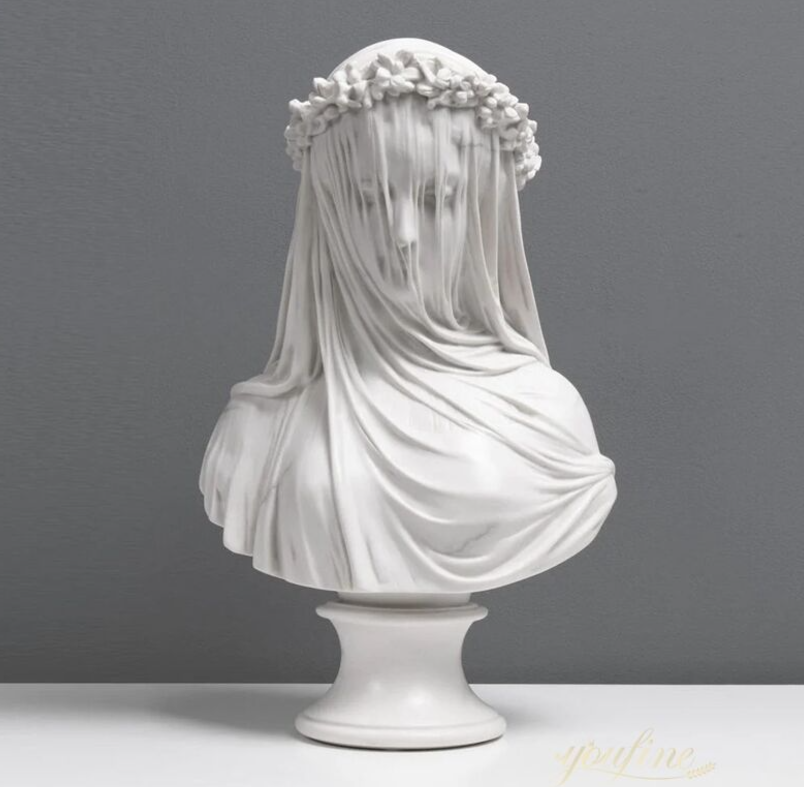
A Blend of Skill and Emotion
One of the most compelling aspects of the “Veiled Woman” is how it transcends its technical brilliance to evoke deep emotional responses.
Evoking Mystery and Intrigue: The veil, delicately draped over the woman’s face, creates a sense of mystery, symbolizing themes of concealment and revelation. This subtle interplay invites viewers to contemplate the woman’s identity, emotions, and the deeper meaning behind the artwork.
Serenity and Grace: The serene expression of the veiled figure exudes a quiet strength and grace, encouraging introspection. Viewers often find themselves drawn into the emotional depth of the sculpture, connecting with its timeless beauty on a personal level.
Human Connection: The piece bridges the gap between artist and observer, allowing viewers to appreciate not only the woman depicted but also the extraordinary creativity and vision of Lombardi himself.
An Icon of Marble Sculpture
The “Veiled Woman” is widely regarded as a pinnacle of marble sculpture, showcasing the heights of what can be achieved with the medium.
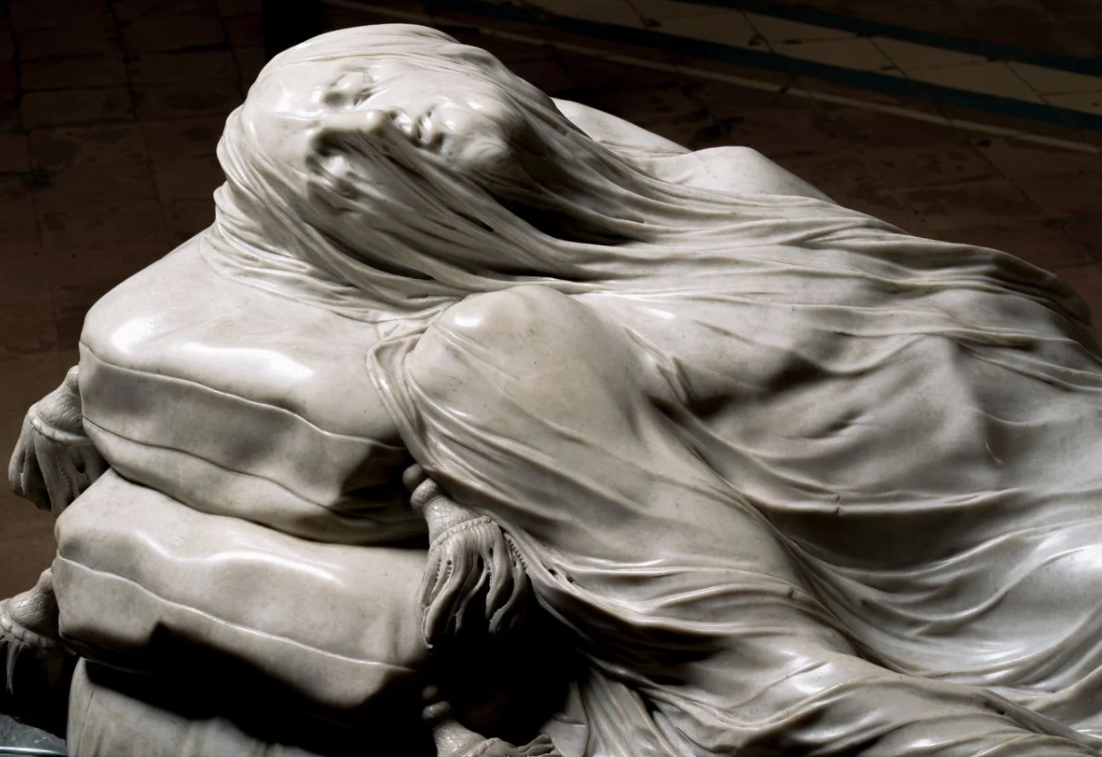
Technical Mastery: Lombardi’s ability to carve marble to create the illusion of a translucent veil demonstrates his unparalleled skill. The intricate folds and lifelike texture mimic the properties of delicate fabric, transforming solid marble into something seemingly weightless and ethereal.
Attention to Detail: Every element of the sculpture—from the contours of the face beneath the veil to the precise drapery—reflects meticulous craftsmanship. These details highlight Lombardi’s dedication to his art and his mastery of classical techniques.
Innovation in Sculpture: The work stands out not only for its realism but also for its innovative approach. Lombardi pushed the boundaries of marble carving, blending technical precision with artistic expression to create a piece that feels both timeless and modern.
A Window into History
The “Veiled Woman” offers more than just aesthetic appeal; it serves as a lens through which viewers can explore the cultural and artistic values of the 19th century.
Reflection of 19th-Century Ideals: The sculpture reflects the era’s fascination with classical antiquity and its pursuit of beauty and perfection in art. During this period, artists often sought to emulate and reinterpret classical forms, blending them with contemporary themes and techniques.
Symbol of Artistic Revival: The piece is emblematic of the 19th-century revival of marble sculpture, a medium that had seen its zenith during ancient Greece and Rome. Artists like Lombardi brought this tradition into a new age, ensuring its continued relevance and appeal.
Cultural Significance: The veil itself carries cultural and symbolic weight, representing modesty, spirituality, and mystery in various traditions. By incorporating this element, Lombardi infused his work with layers of meaning, allowing it to resonate with audiences across cultures and generations.
Why It Endures Today
The enduring appeal of the “Veiled Woman” lies in its ability to connect with audiences on multiple levels—technical, emotional, and cultural.
- Universal Themes: The themes of beauty, mystery, and the interplay between what is seen and unseen are universal, allowing the sculpture to transcend time and culture.
- Artistic Inspiration: The piece continues to inspire contemporary artists and sculptors, who study its techniques and marvel at its craftsmanship.
- Cultural Heritage: As a celebrated work of art, the “Veiled Woman” is a reminder of the importance of preserving and appreciating cultural heritage, ensuring that future generations can experience its magic.
Conclusion
Giovanni Battista Lombardi’s “Veiled Woman” is more than just a marble sculpture—it is a celebration of artistic ingenuity, technical mastery, and timeless beauty. From its intricate depiction of a translucent veil to its deep symbolic resonance, the sculpture continues to inspire and captivate audiences more than 150 years after its creation.
As one of the most iconic works of the 19th century, the “Veiled Woman” remains a shining example of how art can transcend time, connecting generations through its universal appeal and profound artistry. For anyone with an appreciation for fine art and history, this masterpiece is a must-see treasure.

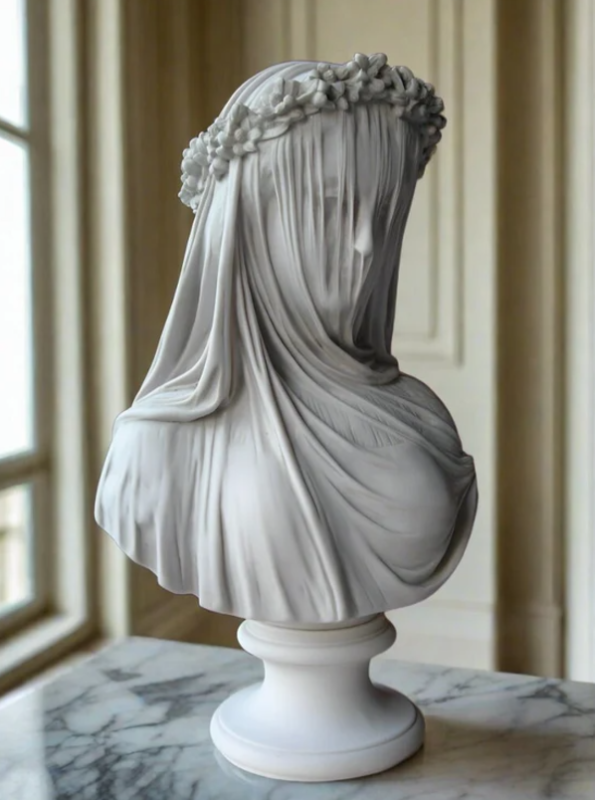
CÁC TIN KHÁC
Mary Walton: The Forgotten Inventor Who Helped Clean Up America’s Cities
Tomb of Queen Nefertari in the Valley of the Queens, Egypt
Discover the Hypostyle Hall of the Temple of Hathor at Dendera
Venus de Losange: Unveiling the Mystery of a 20,000-Year-Old Paleolithic Icon